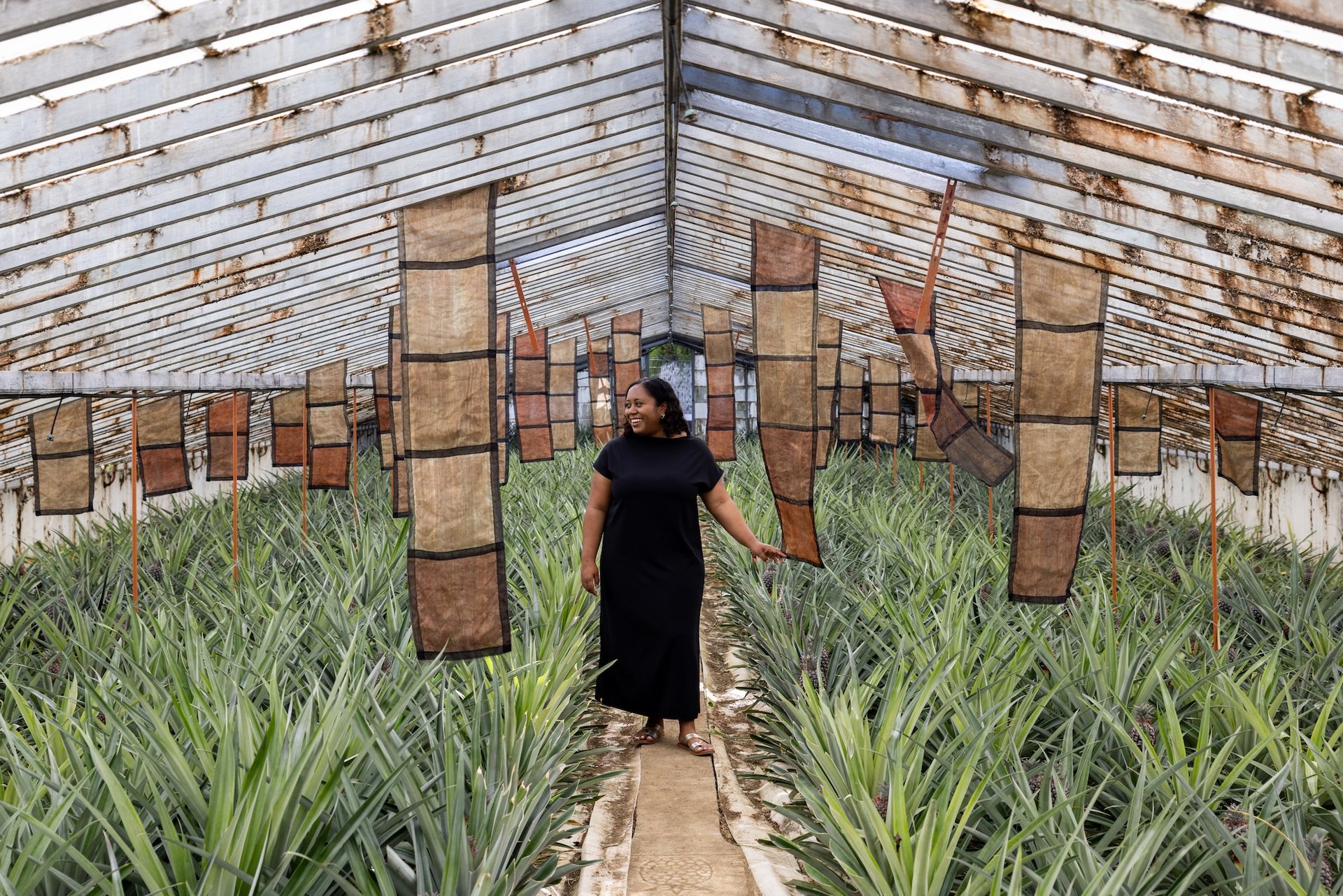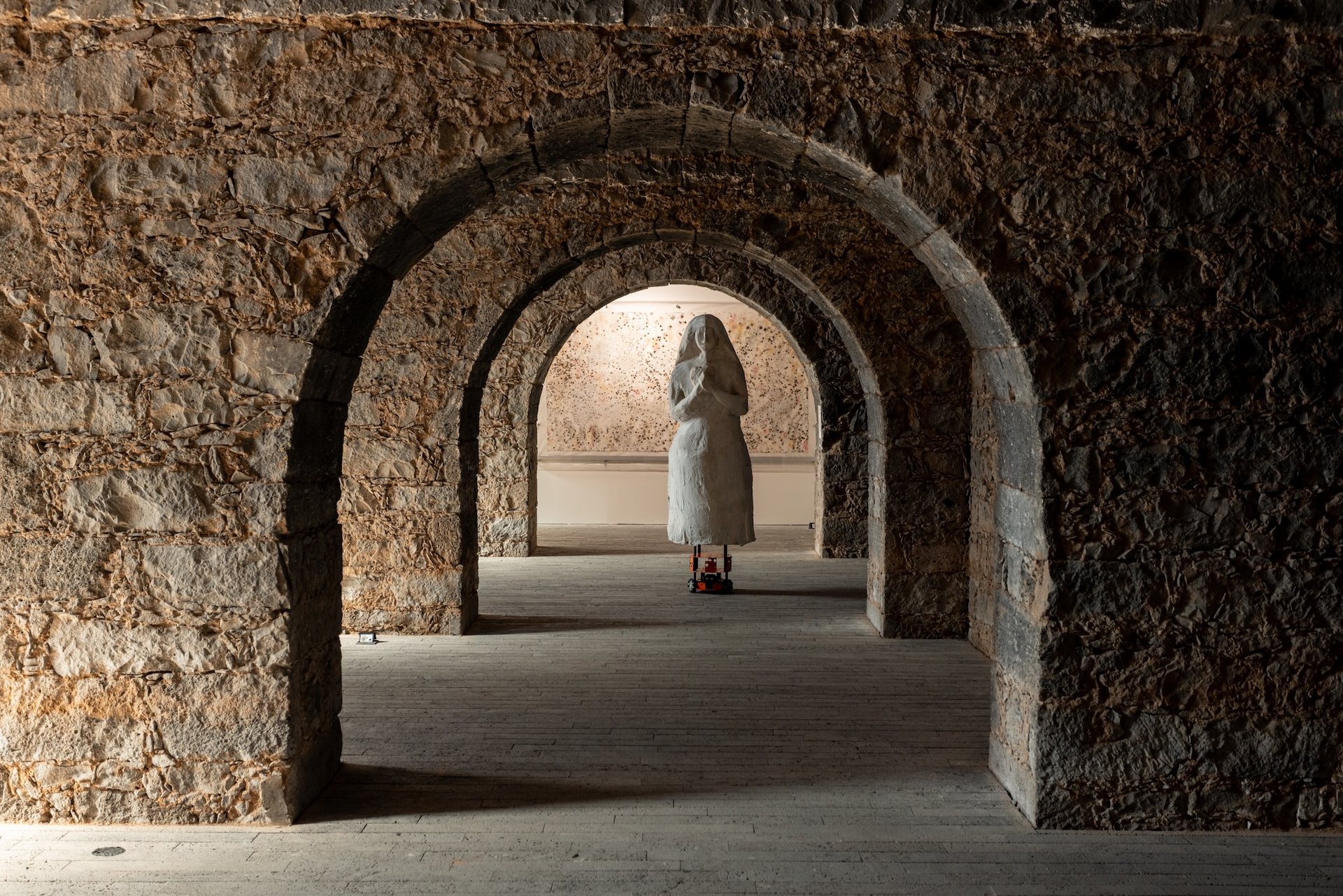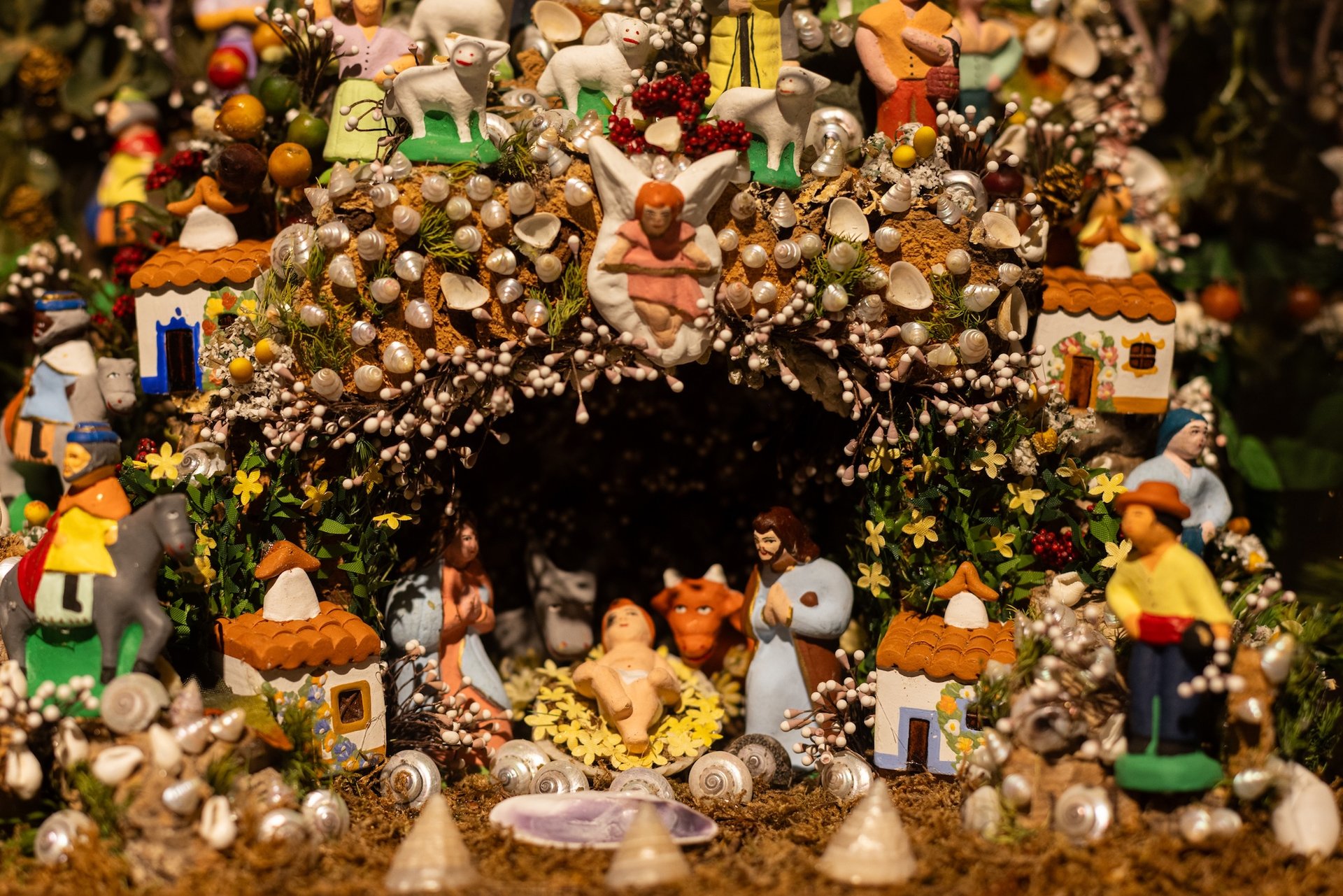Island life, while often romanticised, can be lonely and isolating—especially when that island is in the middle of the Atlantic Ocean. On São Miguel, the largest isle of the Azores archipelago, the Walk&Talk arts festival has been bringing the community together (and attracting international visitors) since 2011. What started as a short annual summer celebration of street art has blossomed into an abundance of exhibitions, performances, excursions, talks, parties, educational programming and other activities. This year, with more than 80 artists participating, Walk&Talk formally transitioned into a biennial (until 30 November).
Walk&Talk’s founder, the curator Jesse James, says that the change in format allows for more planning time as well as a longer window in which to see the art and participate in events. Equally important, the move from the summer to the autumn allows for local school groups to participate; a significant part of the biennial’s programming of excursions and workshops is specially curated for Azorean kids. James knows what it is like to be a young person stuck on a beautiful volcanic island in the middle of nowhere—he grew up there.
Walk&Talk Biennial curators (from left to right): Fatima Bintou Rassoul Sy, Claire Shea, Liliana Coutinho and Jesse James Photo: Mariana Lopes, courtesy Walk&Talk
In the two years of planning the inaugural Walk&Talk Biennial, James was joined by three international co-curators with varying degrees of experience in the Azores. Fatima Bintou Rassoul Sy, the programme director at RAW Material Company in Dakar (founded by the late Koyo Kouoh), had never been to the islands before. Meanwhile, Liliana Coutinho (a programme coordinator for the Lisbon-based arts foundation Culturgest) and Claire Shea (a former director of Fogo Island Arts in Canada) knew the region but were excited to learn more about it. Even James says he is now more knowledgeable about the islands as a result of the bounty of projects they organised. Under a theme like “Gestures of Abundance”, this should come as no surprise.
“Abundance here is not excess or accumulation,” reads the curators’ introductory text to the biennial, “but a density of relations: between worlds, knowledges, species, practices and temporalities.” At Walk&Talk’s official opening on 25 September, James further defined the abundance here as “hope”, a positive outlook on world events—and the incoming Hurricane Gabrielle, which thankfully passed through uneventfully later that night.

The artist Joana Albuquerque grilling over one of her sculptures at the opening dinner Photo: Mariana Lopes, courtesy Walk&Talk
This year Walk&Talk takes place across nine venues throughout São Miguel, providing an opportunity to explore its various towns and sweeping landscapes. Many of the buildings hosting exhibitions are either historic or architecturally stunning, often both. The most striking is Museu Carlos Machado, a former religious building that houses a breathtaking Baroque altar made of intricately carved wood gilded in gold—with some traditional Portuguese tiles added for good measure. Other venues include a scenic former Franciscan convent, a pineapple plantation, a 19th-century public market and a contemporary art museum called Arquipélago housed in an old distillery and tobacco factory. Although many of these venues are far from each other, as the biennial’s name suggests, walking and talking are integral parts of the experience. (James likes to say that the late-night parties Walk&Talk organises are also essential.)
The biennial opened with a community dinner on the main plaza in front of the 17th-century town hall in Ponta Delgada, São Miguel’s biggest city. While artists and curators mingled with guests and passersby, a local restaurant prepared a yam soup traditionally cooked using geothermal heat—by burying the pot into the steaming black volcanic sands. At the same time, the artist Joana Albuquerque (based between Ponta Delgada and Munich) painstakingly grilled pineapple skewers over her black, metal sculptures evocative of geothermal vents.

The artist Mae-Ling Lokko with her Smooth Cayenne Notes (2025) Photo: Mariana Lopes, courtesy Walk&Talk
The Azores are known for their pineapples, which are uniquely small, extra sweet and grown in greenhouses. A couple of these greenhouses play host to new works by the Ghanaian Filipino artist Mae-Ling Lokko, who created textiles from pineapple fibre and leaves. She says she was “exploring where pineapples had formal friendships”, pointing out that her homelands of Ghana and the Philippines are both pineapple producers as well.
The themes of farming and food weave through many of the Walk&Talk projects. The relationship between nature and humans is particularly apt for a place where most of the flora and fauna were brought in from elsewhere. These days, the Azores are overrun with massive bushes of hydrangeas, introduced in the 19th century and now considered an invasive species.
When the Portuguese colonised the islands in the 15th century, the only mammals found there were bats. Free-roaming cows are now everywhere—happy cows make for the best meat and cheese, as locals like to say—making this the perfect place for the Zurich-based drag artist Soya the Cow to do one of her performative walks (together with the Brazilian performance artist Uhura Bqueer). Cows come up again in a humorous video about countryside gossip by the Porto-based artist Inês Coelho da Silva and the Grenada-based artist Kita Rancaño Ward.

Installation view of Alexa Kumiko Hatanaka’s Namazu (2023) Photo: Mariana Lopes, courtesy Walk&Talk
Other biennial works reference the local fishing industry, seafaring and the expansiveness of the ocean. For example, the Lisbon-based artist João Pedro Vale provides a queer take on scrimshaw. One of the best works on view at Walk&Talk—the Japanese Canadian artist Alexa Kumiko Hatanaka’s Namazu (2023)—depicts a giant, earthquake-causing catfish from Japanese mythology. Volcanism and the volcanic landscape of the area also play a role in much of the biennial’s art.
Another motif concerns the cultures that have passed through or stayed in the Azores. (“It is a place of confluence,” Coutinho says.) While there was no native population that the Portuguese displaced when they first arrived, ships trafficking enslaved people across the Atlantic came through the archipelago. This history inspired a number of artists participating in the biennial, including the British Nigerian performance artist Ebun Sodipo, who channeled the experience of a trans enslaved person on the island during opening weekend.

Alice Visentin’s Arcano Mistico (2025) roams through Arquipélago’s basement in the former distillery and tobacco factory Photo: Mariana Lopes, courtesy Walk&Talk
On a lighter note, Walk&Talk also includes local folk singers and dancers. At the biennial’s opening, the group of female singers that appears in the gossip film with the cows regaled gallery visitors with several traditional tunes. And in a more formal performance, Grupo Folclórico de São Miguel played traditional instruments and danced in front of Arquipélago museum; they also led a special dance workshop in October.
Perhaps the most enduring cultural influence on the islands is that of Catholicism—more than 90% of the archipelago’s population is Catholic. At Walk&Talk, this manifests most conspicuously in the religious architecture of many of the buildings hosting its exhibitions. But several artists also chose to interpret the islands’ religious history and culture. In Arquipélago’s dramatic stone basement, the Italian artist Alice Visentin let loose her robotic nun—an homage to Madre Margarida do Apocalipse, who in the 19th century created a giant, intricate diorama of biblical scenes with thousands of tiny figurines made from bread, resin, shells and other found materials. In a couple of biennial spaces, visitors can see the traditional Azorean folk-art clay figurines that started out as religious in theme but now include Disney princesses and other pop-culture references.

Detail view of a nativity scene with traditional-style Azorean clay figurines Photo: Mariana Lopes, courtesy Walk&Talk
As a largely Catholic community, the Azores archipelago has a socially conservative bent. This is one of the reasons James has always ensured that Walk&Talk holds space for queer expression. On secluded islands where the university does not offer art degrees, bringing artists together is also invaluable. As is reuniting the Azorean diaspora, which extends to Europe, the US, Canada and Brazil. (James himself now lives in Lisbon.) James and other biennial organisers often refer to a “Walk&Talk generation”—young people on São Miguel who grew up going to, participating in and working at the festival who have (hopefully) been inspired to develop their own creativity.
Perhaps among those encouraged by the long-running festival are the members of the local punk band Amemo, which provided music for a video work on view this year by the artist and choreographer Meg Stuart. The young and enthusiastic musicians also played a delightful afternoon set during the biennial’s opening weekend to a mixed crowd of art-lovers and their own peers. They were proof that the “Walk&Talk generation” was excited to be there.
- Walk&Talk Biennial, various locations, São Miguel, Azores, Portugal, until 30 November
